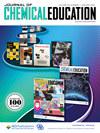Knoevenagel Synthesis and NMR Analysis of Stilbene Derivatives
IF 2.5
3区 教育学
Q2 CHEMISTRY, MULTIDISCIPLINARY
Journal of Chemical Education
Pub Date : 2024-12-10
DOI:10.1021/acs.jchemed.4c0079810.1021/acs.jchemed.4c00798
引用次数: 0
Abstract
A green laboratory experiment for the synthesis of substituted stilbenes via a Knoevenagel-type condensation reaction has been developed for undergraduate instruction. By incorporating several green chemistry principles, the modified procedure is operationally simple and can be completed within two typical lab periods. This experiment allows students to review and refine their mechanistic understanding and spectroscopic skills. Moreover, it is cost-effective and suitable for large groups, minimizing the financial burden on departmental budgets. The experiment serves as an effective pedagogical tool in promoting green chemistry in chemical education.

求助全文
约1分钟内获得全文
求助全文
来源期刊

Journal of Chemical Education
化学-化学综合
CiteScore
5.60
自引率
50.00%
发文量
465
审稿时长
6.5 months
期刊介绍:
The Journal of Chemical Education is the official journal of the Division of Chemical Education of the American Chemical Society, co-published with the American Chemical Society Publications Division. Launched in 1924, the Journal of Chemical Education is the world’s premier chemical education journal. The Journal publishes peer-reviewed articles and related information as a resource to those in the field of chemical education and to those institutions that serve them. JCE typically addresses chemical content, activities, laboratory experiments, instructional methods, and pedagogies. The Journal serves as a means of communication among people across the world who are interested in the teaching and learning of chemistry. This includes instructors of chemistry from middle school through graduate school, professional staff who support these teaching activities, as well as some scientists in commerce, industry, and government.
 求助内容:
求助内容: 应助结果提醒方式:
应助结果提醒方式:


